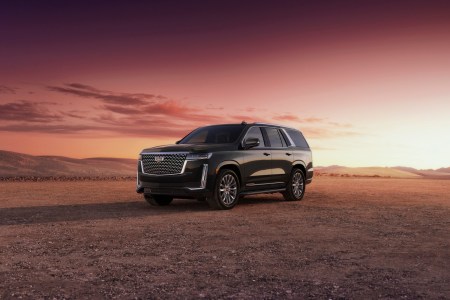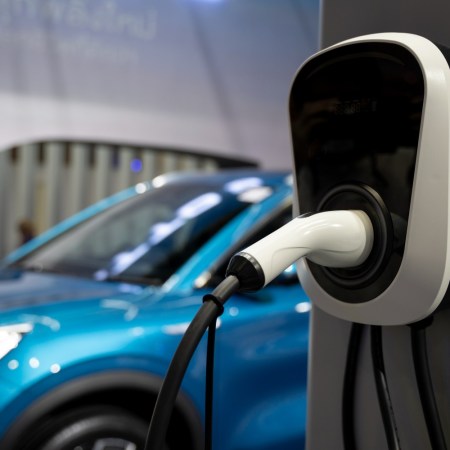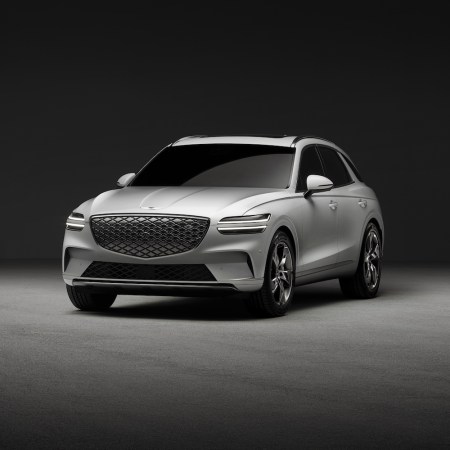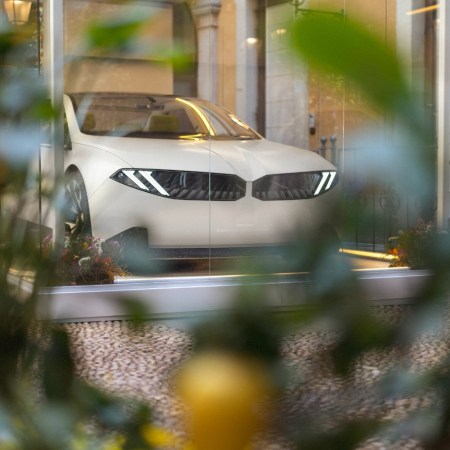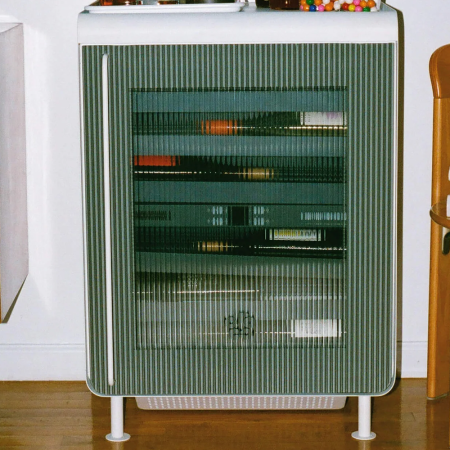General Motors has been on a bit of a rollercoaster over the past few years when it comes to EV success. Despite healthy sales and a reputation strong enough to withstand a battery recall tied to manufacturing defects that caused 16 fires and led to a $150 million settlement with owners, the Chevrolet Bolt was unceremoniously dumped from the roster at the end of last year in favor of the automaker’s all-new electric platform called Ultium (which will underpin the vehicle’s own return in a year or two).
Positioned as an upgrade over the Bolt’s starting point, Ultium was trumpeted with great fanfare — at least until the delays surrounding its launch began to mount, followed by a tumult of customer complaints about build quality and software problems with those first few models that did find their way to market. Stop-sale orders were issued, brows were furrowed, and after months of deliberation, a trickle of Ultium-powered machinery once again arrived in dealerships.
Such is the case with the Cadillac Lyriq, the luxury brand’s very first mainstream electric model and, at least conceptually, the torchbearer for what Ultium brings to the table. Although the Lyriq officially arrived for the 2023 model year, Cadillac initially seemed incapable of building the SUV. Production was limited to around 100 examples during the first calendar year of production — and the Lyriqs that did roll off the line were hampered by enough quality problems to push back production of most of the rest of the Ultium roster.
| Vehicle | 2024 Cadillac Lyriq |
| Trim Tested | Luxury 3 |
| Starting Price | $57,195 |
| Price of Model Tested | $74,715 |
| Vehicle Type | Two-row electric SUV |
| Motor | Dual-motor EV, 500 hp / 450 lb-ft of torque |
| Range | 307 miles |
Consider 2023 a “lost season” for the Lyriq, given its fizzled launch and the follow-on frustrations of early adopters. Now that 2024 is upon us, Cadillac has ostensibly had the time needed to work out all of the early bugs and ramp up production to the point where ordering the electric hauler is no longer a ticket to uncertainty. This is no small thing, given that the Lyriq is facing off against established models like the Tesla Model Y, the Genesis Electrified GV70 and the BMW iX, each of which used Ultium’s idle time to establish a firmer foothold in the minds of buyers.
My time with the latest Lyriq shows that Cadillac has made several steps forward in advancing a credible threat to the electric premium pack mentioned above, but there are still some puzzling aspects of the EV that hold it back from being a true front-runner.

Lyriq’s Effortless Luxury
Cadillac has done admirable work to give the Lyriq a legitimately fresh face that still hews to the brand’s well-established visual identity. The “false grille” up front might resemble the prismatic view from the cockpit of the Millennium Falcon as it attempts a lightspeed launch, but it’s a surprisingly good fit with the SUV’s forward lighting and broad visage. Seen in profile, the Lyriq is a little more anonymous, disappearing against the rest of the battery-bearing crowd, but at the rear we get more signature lighting and sheet metal shaping that pulls it clearly back into the Cadillac camp.
The Lyriq’s passenger compartment makes perhaps the most convincing argument in its bid for luxury attention. Cadillac offers the vehicle in three distinctive editions — Tech, Luxury and Sport — and once you step up from the base Tech model, the brand adds another three layers of trim for the latter two. My Luxury 3 tester, therefore, included nearly every option available for the vehicle, boosting its price to about $75,000 (a $17,000 step up over the entry-level edition).
Cadillac Super Cruise Gave Me 800 Miles of Hands-Free Towing
The company’s new all-seeing, semi-autonomous system took stress off my trailer tripEven without the available Nappa leather package, the Lyriq’s interior trappings felt impressively opulent. Balancing the curved glass of its primary dashboard screen with brushed aluminum, wood and exceptional leather upholstery on every surface that counts, the SUV avoided the sterility that is sometimes a side effect of minimalist EV design. There are some missteps in how the driver interacts with the Lyriq’s landscape, but I certainly had no complaints about the building blocks of the environment itself, which are head and shoulders above anything offered by Tesla.
I do have one specific reservation about the Lyriq’s design, however, and that’s the oversized panel that conceals the vehicle’s charge port. Positioned on the driver’s side fender, it’s extremely large, and it opens and closes with a shaky motorization that I can’t see surviving well in a winter climate. It may also be responsible for the vehicle’s most alarming flaw, which I’ll discuss in greater detail towards the end of this review.

Big Power, Big Range, Big Bones
The Lyriq is offered in both rear-wheel drive (single motor) and all-wheel drive (dual-motor) layouts. There are significant power differences between the two: my AWD model featured 500 horsepower and 450 lb-ft of torque, easily gapping the 340-horsepower base model in a test of straight-line speed (which happens in less than five seconds for the mightier of the two). Given that the SUV weighs in at nearly 6,000 pounds, every electric horse that can be bridled plays a meaningful role in how the Cadillac feels when underway.
A much smaller chasm separates the official range report for each model. In a world where single-motor EVs routinely embarrass their doubled-up counterparts in a marathon, the difference between these two is a mere seven miles. The AWD edition posts 307 miles of driving for a full charge of its 102-kWh battery, and while that’s not top of the charts when it comes to electric options, it’s 70 miles better than what the Genesis Electrified GV70 has to offer and right on par with the BMW iX.
I found the Cadillac’s real-world performance to closely match its state of charge during the seven days of summer we spent together. The vehicle is also capable of soaking up energy at speeds of up to 190-kW when plugged into a fast charger, which translates into nearly 80 miles added in 10 or so minutes.
Given its heft, it’s no surprise that this Cadillac doesn’t tilt towards the sporting side of the drive equation, figuring instead for a calm and collected, almost yacht-like personality as it devours asphalt. The Lyriq’s ride feels insulated, and while it’s quick with the pedal down (as suggested by the towering output of its motors), there’s more than a little dip and lean when cornering.
Hustle isn’t in this SUV’s vocabulary, which will likely be fine with the vast majority of drivers uninterested in anything other than the daily commute or weekend road trip. For the latter, Cadillac’s Super Cruise is on deck with its superb hands-free cruise control feature, which can even automatically change lanes when passing slower traffic. It’s by far the best implementation of this technology on the market.

Here Comes the Asterisk
Much of my experience with the Cadillac Lyriq was positive. Attractive looks, a sumptuous interior, and solid real-world performance and range are all must-haves in any EV, and that combines with pricing that is competitive with (or even undercuts) its primary opposition.
And yet there are aspects of the Lyriq that remain a puzzle. With so much attention paid to the interior, why are some sections of the SUV’s enormous LCD infotainment and gauge cluster screen obscured by the steering wheel? In a similar user-interface vein, how did the confusing and almost useless dial on the door panel that controls both the massage function and lumbar control for the two front thrones ever make it into a production vehicle?
Those might seem like nits, but I’m not done picking. Most troubling to me were the clear signs that the Lyriq’s build quality has yet to catch up with Cadillac’s ambitions, despite the extra time it’s been allotted. For example, from the moment I put the first mile on the vehicle, there was a loud rattle from the right rear of the cabin over bumpy sections of road, which is astounding on a luxury car with an almost virgin odometer.
Then there was the wailing. At first, I attributed the loud, high-pitched sound emanating from the front of the vehicle to tire noise from its massive 22-inchers over noncompliant asphalt, but traveling over the same section of pavement a few minutes later revealed that the sound had disappeared. Its decibels would rise and fall again and again at seemingly random moments, to the point where even passengers would comment on it, culminating in a 90-second period when, upon entering Montreal, it suddenly amped up to a level more commonly associated with rotating metal blades, causing me to glance around in alarm that I had somehow missed an active construction zone hovering inches away from my fender.
Was it actual tire noise? A problem with the low-speed sound emitter designed to warn pedestrians of the (ostensibly silent) EV’s presence? An issue with the front motor? Or was I experiencing the same noise issues that other publications had encountered due to a loose charge port cover, the very panel I had singled out almost immediately as feeling flimsy in comparison to the rest of the vehicle?
I don’t know the answer to that question, and neither did Cadillac when I dropped off the vehicle at the end of the week. And it’s a question that prospective premium customers shouldn’t have to ask. GM has fought through so much adversity just to get Ultium past the starting gate, and it’s disappointing to see promising and important-to-the-brand vehicles like the Lyriq continue to face quality headwinds.
Or maybe the real response is to wait another year before parking an Ultium EV in your driveway if you aren’t patient enough to deal with the growing pains still underway at Cadillac. For some, prudence will be the best option, but it’s easy to understand why others might be tempted by all of its exceptionally-priced charms to roll the dice on the Lyriq.
This article was featured in the InsideHook newsletter. Sign up now.

